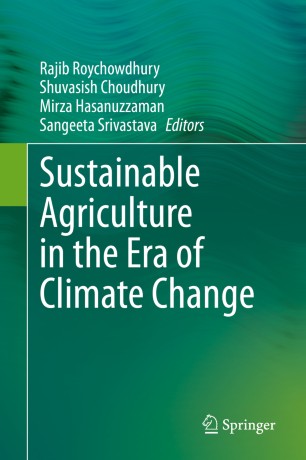

Most ebook files are in PDF format, so you can easily read them using various software such as Foxit Reader or directly on the Google Chrome browser.
Some ebook files are released by publishers in other formats such as .awz, .mobi, .epub, .fb2, etc. You may need to install specific software to read these formats on mobile/PC, such as Calibre.
Please read the tutorial at this link. https://ebooknice.com/page/post?id=faq
We offer FREE conversion to the popular formats you request; however, this may take some time. Therefore, right after payment, please email us, and we will try to provide the service as quickly as possible.
For some exceptional file formats or broken links (if any), please refrain from opening any disputes. Instead, email us first, and we will try to assist within a maximum of 6 hours.
EbookNice Team

Status:
Available0.0
0 reviewsUnder ongoing climate changes, natural and cultivated habitats of major crops are being continuously disturbed. Such conditions impose and exacerbate abiotic and biotic stressors. Drought, salinity, flood, cold, heat, heavy metals, metalloids, oxidants, irradiation, etc. are important abiotic stressors, while diseases and infections caused by plant pathogens, such as fungal agents, bacteria and viruses, are major biotic stresses. In many instances, stresses have become the major limiting factor for agricultural productivity and exert detrimental role on growth and yield of the crops. To help feed an ever increasing world population and to ensure global food security, concerted efforts from scientists and researchers have identified strategies to manage and mitigate the impacts of climate-induced stresses. This book, summarizing their findings, is aimed at crop improvement beyond such kind of barriers, by agronomic practices (genetics, breeding, phenotyping, etc.) and biotechnological applications, including molecular markers, QTL mapping, genetic engineering, transgenesis, tissue culture, various 'omics' technologies and gene editing. It will cover a wide range of topics under environmental challenges, agronomy and agriculture processes, and biotechnological approaches. Additionally, fundamental mechanisms and applied information on stress responses and tolerance will be discussed. This book highlights problems and offers proper solutions for crop stress management with recent information and up-to-date citations. We believe this book is suitable for scientists, researchers and students working in the fields of agriculture, plant science, environmental biology and biotechnology.